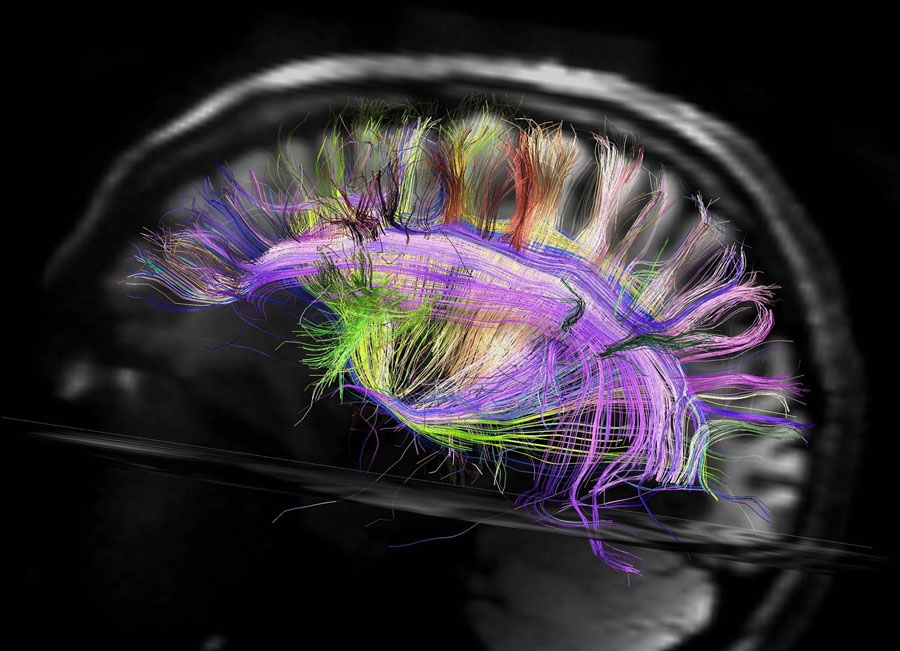The principle of operation of the “forgetting memristor” is similar to the principle of operation of a brain neuron.

The human brain is an extremely complex system. To find out in detail about what is happening inside, scientists have been trying for hundreds of years. Now, with the development of computer technology, it turns out much better than before. The process of studying the brain has moved off the ground and is gradually moving forward.
It has long been known that we are traditionally not very strong in carrying out complex calculations, but our brain simultaneously performs many tasks. And he performs many tasks much better than a machine. For example, recognition of images to a person is very good. With computers, even complex neural systems, this is worse. Another feature of a person is that even the most complex calculations we carry out with much less energy than computers. No wonder that scientists are trying to build at least a simplified model of the human brain.
This is usually a software model. Now there have been attempts to create hardware capable of acting as a system of neurons of a certain part of the human brain. Such a model, for example, was previously attempted by Apple, Intel and some other companies to create using conventional semiconductor elements. As part of the new project, which is being implemented by the combined efforts of several companies and organizations, including Hewlett Packard Enterprise and even the US Air Force, they managed to develop a memristor that behaves like a neuron. The work done recently by such an element predetermines its response. The specialists managed to achieve this by spraying the metal in a solid memristor.
')
Experts have proposed this element design after studying the principle of operation of a normal neuron. In many cases, neuron activity is determined not only by the type of signal received by this element. In fact, this element has a short-term memory. If a particular neuron has already received signals in the recent past, then it is easier to activate than a neuron that has not received such signals. Over time, if the neuron does not receive signals, its response returns to normal.
Scientists decided to create an artificial element that would react to signals in this way. The idea was implemented, for this it took to use several achievements of science and technology. In particular, the results of research by material scientists were useful.
A memristor is a passive element in microelectronics that can change its resistance depending on the charge flowing through it (the current integral during operation). The operation of the device is ensured by chemical transformations in a thin (5 nm) two-layer film of titanium dioxide. One of the layers of the film is slightly depleted of oxygen, and oxygen vacancies migrate between the layers under the action of an electrical voltage applied to the device.

The authors of the study created a memristor based on silicon, oxygen and nitrogen. In order to switch the memristor to the "active" state, scientists used the smallest particles of silver. As soon as current is supplied to the memristor, the element heats up. Its heating leads to the dispersion of silver in the solid medium of the memristor. There are "wires" that connect the two ends of the memristor. As a result, the memristor becomes a conductor of electric current.
But even this is not interesting, but what happens during a power outage. In this case, it can be expected that the element will be in a state with low resistance. In fact, in this case a phenomenon occurs that is called recondensation or Ostwald ripening .
This is the process of condensation of a supersaturated phase of a substance at late developmental times, when the nucleation phase is completed, and the growth of large grains of the new phase (for example, droplets from steam) occurs at the expense of smaller ones in conditions of “suppression without eating”, that is, dissolving drops without sticking together. The phenomenon is first described by Ostwald.
In the case of a memristor, this means that silver is not in the form of nanowires for a long time. Particles of this element come together, gradually becoming larger. Smaller particles of the same element come together. The memristor behaves like a neuron. If the repeated signal was sent to the memristor almost immediately after receiving the first signal, then its conductivity with silver elements remains the same, that is, high. But if for a long time no electricity is supplied to the memristor, the silver nanowire is divided into smaller particles that diverge in the volume of the memristor, and its conductivity drops to the original values.

Experts believe that with the help of a group of such memristors, you can build a small model of a brain region. So far simple, but if everything goes well, scientists hope to build the world's first neural computer with "deep thinking."
Nature Materials , 2016. DOI: 10.1038 / NMAT4756 ( About DOIs ).
Source: https://habr.com/ru/post/398055/
All Articles